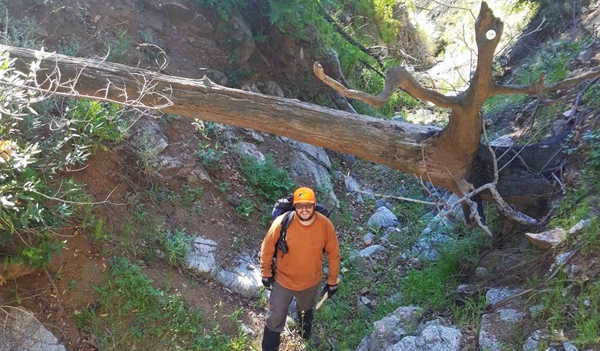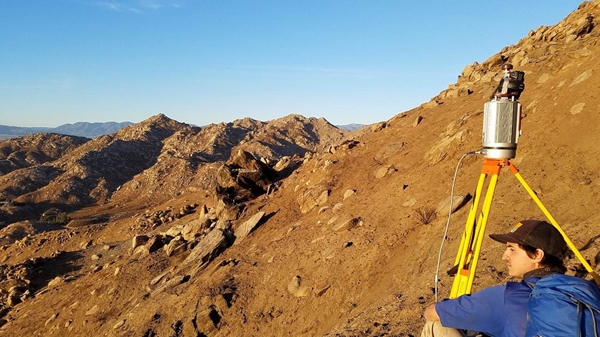Destructive debris flows, commonly known as mudslides, have affected many parts of California in the past few years. Debris flows can cause extensive damage to homes and infrastructure, and threaten human safety. A related issue that gets less attention is how debris flows affect water quality downstream following fires. A current study led by Andrew Gray of the University of California, Riverside, is therefore timely.
“Historically, we haven't known much about the quality and quantity of sediments exported from burned areas. Our approach to addressing this knowledge gap was to monitor debris flows and associated suspended sediment so we could get a better understanding of the changing conditions that might lead to a debris flow following a wildfire. We also wanted to characterize the effects of debris flows on water quality,” says Gray.
Debris flows are fast moving masses of rocks, soil, and water that occur when steep terrain cloaked in unstable sediments is exposed to high intensity rainfall. Urban populations and infrastructure adjacent to wildlands in Southern California have both grown in recent decades. Combined with increased risk of wildfire from a changing climate and a legacy of fire suppression, this means that residents are at a higher risk from dangerous debris flows.
For this study, Gray and his team, which included two other professors, three graduate students, and eight undergraduate students, selected research sites in the steep watersheds of Englewild and Las Lomas canyons above the Southern California cities of Glendora and Duarte, among others. At the time, these headwater catchments had recently burned during the Colby and Fish fires of 2014 and 2016, respectively. This context made the research especially timely and critical, as the fire activity rendered most of these areas, which are historically prone to damaging debris flows, particularly vulnerable. Collectively, the team has spent over 100 days in the field over four years taking samples, which has been no easy feat.
According to Gray, “working in steep hillslopes and channels destabilized by wildfire is extremely challenging.” Although Gray and his team took serious measures to protect themselves, there were always risks: “From the acute hazards posed by rock fall or falling ourselves, to the chronic presences of dust, ash, and poison oak, work with our group has become somewhat infamous. Even external participants with broad experience with steep, demanding field work have characterized our field sites as the worst!”
Rapidly deploying the research group to the various catchments after fire and storm events to take samples, combined with the time consuming and highly technical processing of the samples and data afterwards, also made this research challenging.
The researchers found that the more recently burned Englewild Canyon catchment had a lower threshold for debris flow than the Los Lomas Canyon catchment. These results indicate that as a burned system rebounds, vegetation comes back, soil health recovers, and there is less debris flow and sediment transport, as well as improved water quality downstream. In fact, Gray found it impressive how quickly these steep catchments re-stabilize following wildfire, even during drought periods.
Findings from the study will help scientists and the Los Angeles County Department of Public Works personnel working on debris flow management modify their approach to assessing debris flow risk after fires to help mitigate danger during post-fire storms.
The hard work and physically demanding field work seems to have paid off. Gray is excited that his group has been able to collect high quality data that reveal sediment transport processes at very fine scales. This will enable the researchers to gain a better understanding of how sediment sources and pathways change over time, and begin to explore what conditions cause changes in the composition of sediments on a hillside.
In addition, the data has brought up further questions for the group to explore. They plan to use the results of this study to modify how they characterize post-fire debris flow hazards in steep, mountainous regions. They also have plans to expand their research to larger spatial scales so they can examine how wildfire impacts sediment transfer and water quality through entire watersheds.
Gray says “given the increase in wildfires and urban growth into places where debris flows are likely, we are looking forward to helping managers reduce the risks from the most devastating events.”

